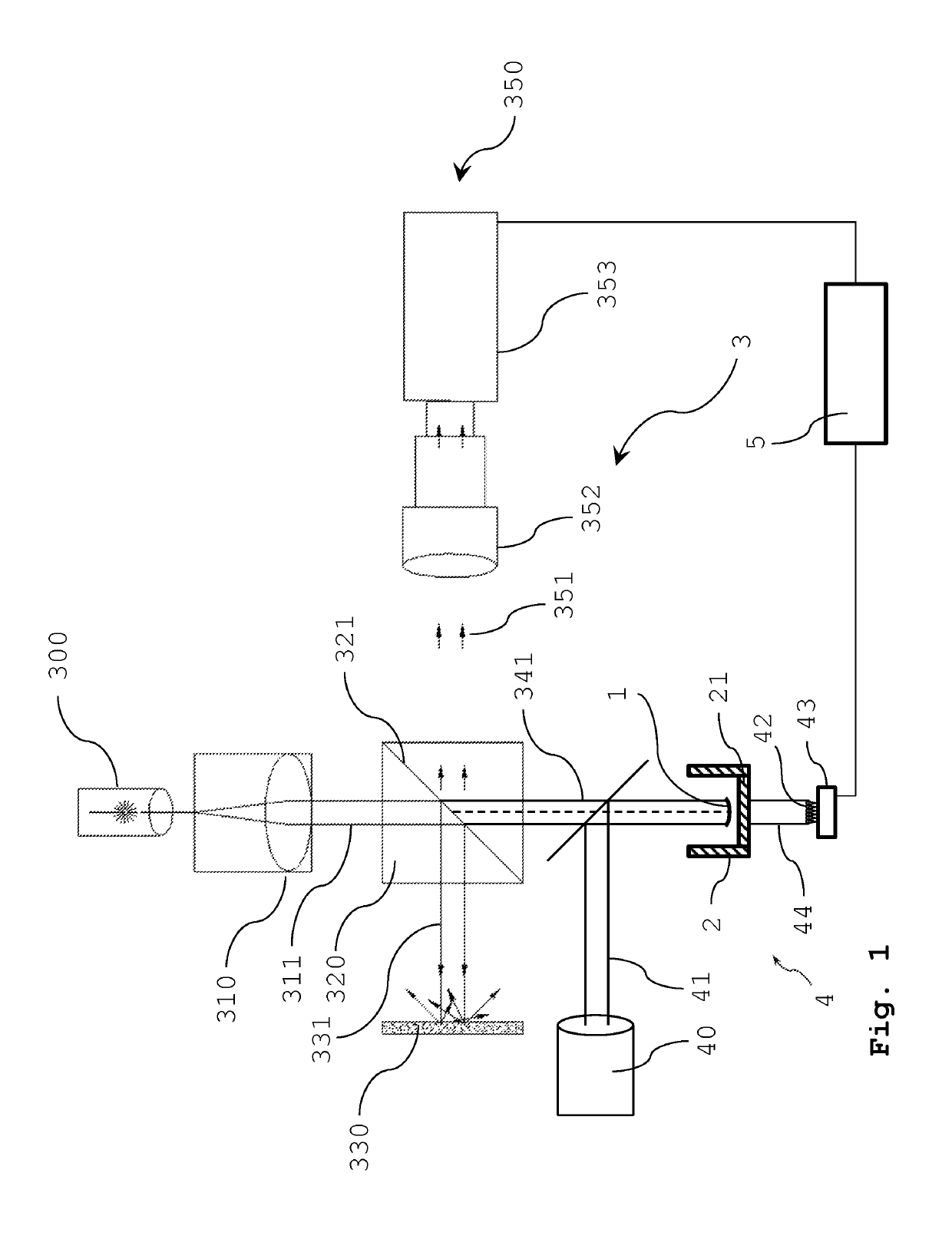Method and apparatus for the determination of the index of refraction of lens material
a technology of index and refraction, which is applied in the direction of optical apparatus testing, optical radiation measurement, instruments, etc., can solve the problems of difficult to obtain very accurate measurements of the refractive index of the contact lens, strong water gradient at the surface of the contact lens, and inability to accurately measure the refractive index of the contact lens in conventional methods, etc., to achieve accurate determination of the refractive index of the material, accurate geometry determination, and high accuracy of determination
- Summary
- Abstract
- Description
- Claims
- Application Information
AI Technical Summary
Benefits of technology
Problems solved by technology
Method used
Image
Examples
Embodiment Construction
[0073]In the drawings, like reference numerals have been used throughout to designate identical elements. In the following disclosure, the present invention is described in the context of its use as a method and apparatus for measuring the refractive index of contact lenses.
[0074]FIG. 1 shows a schematic view of an embodiment of a method and apparatus for determining the refractive index n of a material of a contact lens according to the invention. The apparatus 100 comprises an optical coherence tomography system and a wave front sensor system. The optical coherence tomography system includes a low-coherence light source 300, a lens 310 for forming a collimated light beam and an interferometer 320. The interferometer comprises a beam splitter 321 receiving the collimated light beam from the light source 300 and dividing the light beam into a reference beam and a sampling beam. A reference arm includes a reference mirror 330 and receives a reference beam from the beam splitter 321 o...
PUM
 Login to View More
Login to View More Abstract
Description
Claims
Application Information
 Login to View More
Login to View More - R&D
- Intellectual Property
- Life Sciences
- Materials
- Tech Scout
- Unparalleled Data Quality
- Higher Quality Content
- 60% Fewer Hallucinations
Browse by: Latest US Patents, China's latest patents, Technical Efficacy Thesaurus, Application Domain, Technology Topic, Popular Technical Reports.
© 2025 PatSnap. All rights reserved.Legal|Privacy policy|Modern Slavery Act Transparency Statement|Sitemap|About US| Contact US: help@patsnap.com

